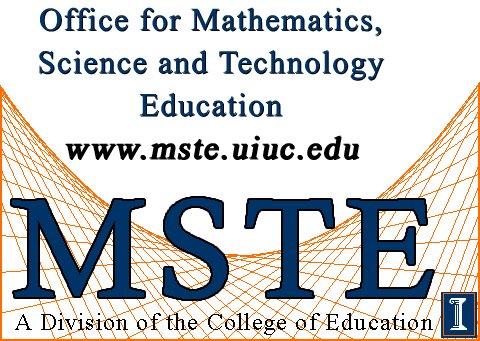CONTENT
STANDARDS: 9-12
(a) Science as Inquiry : Abilities necessary to do scientific
inquiry and understandings about scientific inquiry.
(b) Science and Technology: Abilities
necessary for technological design, and understandings about science
and technology.
(c) Science in Personal and Social
Perspectives: Environmental Quality.
- Connections to the Illinois Learning
Standards
FOR MATHEMATICS:
(a) 10.A.4a.: Represent and organize data
by creating lists, charts, tables, frequency distributions, graphs,
scatter plots and box plots.
(b) 10.B.4.: Design and execute surveys or
experiments, gather data to answer relevant questions, and communicate
results and conclusions to an audience using traditional methods and
contemporary technology.
FOR SCIENCE:
(a) Goal 11 with all its objectives for
early and late high school: Understand the processes of scientific
inquiry and technological design to investigate questions, conduct
experiments and solve problems.
(b) 12.B.4a.: Compare physical, ecological
and behavioral factors that influence interactions and interdependence
of organisms.
(c) 13.A.5c.: Explain the strengths ,
weaknesses and uses of research methodologies including observational
studies, controlled laboratory experiments, computer modeling and
statistical studies.
(d) 13.B.5d.: Analyze the costs, benefits
and effects of scientific and technological policies at the local,
state, national and global levels.
FOR ENGLISH LANGUAGE ARTS:
(a) 1.C.5f.: Use tables, graphs and maps to
challenge arguments, defend conclusions and persuade others.
(b) 2.B.4a.: Critique ideas and impressions
generated by oral, visual, written and electronic materials.
(c) 3.B.5.: Using contemporary technology,
produce documents of publication quality for specific purposes and
audiences; exhibit clarity of focus, logic of organization, appropriate
elaboration and support and overall coherence.
(d) 3.C.5a.: Communicate information and
ideas in narrative, informative and persuasive writing with clarity and
effectiveness in a variety of written forms using appropriate
traditional and/or electronic formats; adapt content, vocabulary, voice
and tone to the audience, purpose and situation.
(e) 4.B.5a.: Deliver planned and impromptu
oral presentations, as individuals and members of a group, conveying
results of research, projects or literature studies to a variety of
audiences using appropriate visual aids and available technology.
FOR SOCIAL STUDIES:
(a) 15.C.4b.: Explain the importance of
research, development, invention, technology and entrepreneurship to
the United States economy.
(b) 15.D.5c.: Explain how technology has
affected trade in the areas of transportation, communication, finance,
and manufacturing.
FOR FINE ARTS:
(a) 26.B.4d.: Demonstrate knowledge and skills that
communicate clear and focused ideas based on planning, research and
problem solving.



